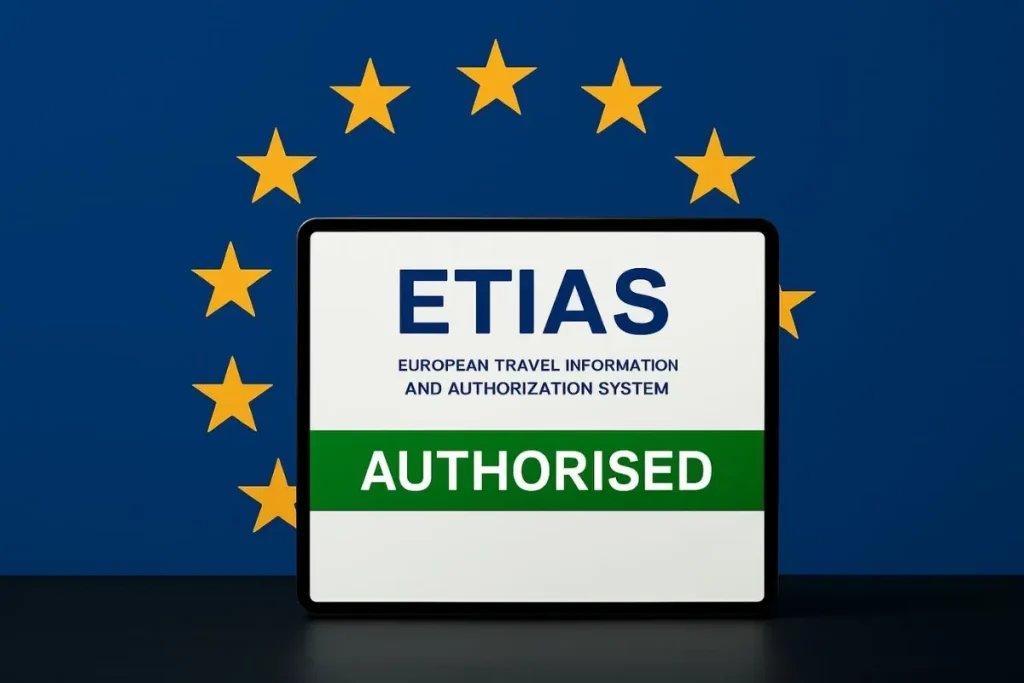The recent proposal for an ETIAS fee increase has raised eyebrows among potential visitors to Europe. Starting in late 2026, the cost for visa-exempt travelers seeking travel authorization will surge from 7 euros ($8) to 20 euros ($23). This nearly tripling of the fee is attributed to factors such as inflation and the need to align with the visa fees of other countries like the U.K. and the U.S. The European Commission emphasizes that this adjustment reflects current operational costs and aims to streamline the travel experience for millions of travelers entering Europe. With these upcoming changes, staying informed about ETIAS travel regulations is essential for anyone planning a trip to the Schengen Area within the next few years.
The impending increase in ETIAS fees marks a significant shift in travel authorizations for those wishing to visit Europe. As the European Commission considers the new fee structure, visa-exempt tourists will soon need to prepare for a heightened cost of entry. This adjustment aligns European visa expenses more closely with similar programs worldwide, underscoring the evolving landscape of travel regulations. Furthermore, understanding the implications of the 2026 changes is critical for individuals planning their trips across the continent. Whether you are a seasoned traveler or planning your first journey, being aware of these updated ETIAS travel requirements can ensure smoother passage into Europe.
Understanding the ETIAS Fee Increase in 2026
In late 2026, the European Commission is set to implement a significant increase in fees for visa-exempt travelers wishing to obtain ETIAS authorization, raising the cost from 7 euros ($8) to 20 euros ($23). This nearly threefold increase aims to address soaring inflation and surging operational costs, which have impacted travel regulation frameworks globally. Many travelers may be concerned about how this fee hike will affect their travel expenses, especially since obtaining ETIAS authorization has already been a necessity for entering 30 European countries for short stays.
The decision to increase fees has been influenced by the need to align with international travel standards. Other nations, such as the U.S. with its ESTA and the U.K. with its Electronic Travel Authorization, have implemented similar fees, and the European Commission aims to maintain competitiveness while ensuring that the security measures accompanying ETIAS remain robust. As the travel landscape evolves, this fee adjustment could reflect a larger effort to enhance travel safety while also supporting the administrative costs involved in processing travel authorizations.
Impact on Visa-Exempt Travelers
The increase in the ETIAS fee signifies a pivotal shift for visa-exempt travelers planning to visit Europe. Until 2026, many travelers enjoyed an affordable travel authorization system, but this change will mean that travelers will need to budget more diligently for their trips. This fee is mandatory for individuals from several nations, including Australia, Canada, Japan, and the U.S., and those who may have previously overlooked these costs will need to take them into account when planning their travels.
While the fee increase may raise concerns among travelers and travel agencies alike, it is important to note that this adjustment is part of broader efforts by the European Union to enhance travel security. The additional funds generated from this fee will likely contribute to more thorough vetting processes and improved oversight, thus ensuring a safer travel experience for everyone. As such, visa-exempt travelers can expect heightened security measures that accompany their trip to Europe.
While this increase might seem daunting, it could also indicate a commitment by the EU to refine travel regulations and processes, aligning with other global standards. Travelers should stay informed about these developments to adapt their travel plans accordingly.
The Role of ETIAS in Streamlining Travel
The European Travel Information and Authorisation System (ETIAS) is designed to ensure both the safety of its citizens and the efficiency of travel across European borders. With rising global travel trends, the need for streamlined travel systems has never been more critical. By implementing ETIAS, the EU not only aims to monitor and manage visitor entries more effectively but also facilitates a seamless travel experience for visa-exempt individuals.
Additionally, ETIAS serves as an advanced security measure, enabling EU nations to enhance their borders’ integrity without imposing cumbersome visa requirements. As policies evolve, travelers will need to navigate the updated travel regulations, ensuring they understand and comply with the necessary authorizations well ahead of their planned trips. This strategic focus on travel safety while maintaining accessibility is vital for tourism in Europe.
Navigating the 2026 Travel Fee Changes
As the 2026 travel fee changes loom, travelers eye these adjustments with aptitude. The forthcoming introduction of the higher ETIAS fee coincides with an ongoing discourse on optimizing travel regulations within Europe. Keeping abreast of these changes should be a priority for anyone planning to travel. This fee alteration not only means higher costs but could also signal the introduction of additional measures that improve the overall travel experience.
Travelers can stay informed about legislative developments through official EU sources or by consulting travel agencies. Those planning vacations or business trips to Europe in late 2026 or beyond should factor in these potential fees when budgeting for their travel. Being proactive about understanding travel authorizations and associated costs can make a significant difference in preparing for a smooth trip.
Comparing International Travel Authorization Fees
With the increase in the ETIAS fee, it becomes crucial to compare such costs with other international travel authorization fees. Travel systems like the U.S. ESTA and the U.K. ETA have already set precedents with their own fee structures. For tourists from visa-exempt countries, understanding these comparisons can illuminate what to expect as travel regulations globally trend toward higher fees and robust security measures.
This comparison is not just about understanding costs; it reflects a broader shift in how governments manage and secure their borders while accommodating international travelers. Prospective visitors to Europe should note the changing landscape of travel fees and be prepared for a more expensive but possibly more secure traveling experience.
Exploring Exemptions Under ETIAS
Despite the ETIAS fee increase, certain groups will continue to enjoy exemptions, which is critical for specific demographics. For instance, individuals under 18 or over 70, as well as family members of EU citizens, are set to be exempt from the authorization fees. This consideration acknowledges the diverse needs of those traveling to Europe and seeks to alleviate financial strain for families and older travelers.
Understanding these exemptions can play a significant role in travel planning, allowing eligible travelers to avoid the new fees altogether. However, it’s essential to keep updated on eligibility criteria, as these can evolve alongside broader travel regulations. Being aware of such provisions ensures that travelers can navigate potential fees effectively.
The Broader Security Context of ETIAS
The ETIAS fee increase aligns with a broader emphasis on national security and vigilant border control. In light of recent global events, European nations are enhancing security procedures to protect their citizens while welcoming international visitors. This heightened level of scrutiny necessitates the establishment of efficient travel authorizations that help track and manage entries into the zone.
The context in which these fees are applied is not solely about monetary gain; it reflects governmental mandates to uphold security without deterring tourism. By establishing thorough screening processes, the EU attempts to strike a balance between ensuring traveler safety and fostering a welcoming atmosphere for visitors.
Future Implications for European Travel
Looking forward, the implications of the increased ETIAS fee may reshape how European travel is approached by both visitors and authorities. As travel patterns continue to evolve, these changes are likely to influence traveler motivation, budget planning, and even the frequency of trips. Tourists may choose to delay travel or explore alternative destinations if experiencing higher travel costs, ultimately impacting the tourism economy.
Additionally, as countries adapt to evolving travel regulations, there may be further changes in fee structures and travel authorization systems. The ability to forecast these developments will be essential for both travelers and the travel industry more broadly. Remaining adaptable and informed can provide travelers a strategic advantage in navigating the future landscape of European travel.
Adapting Travel Plans for ETIAS Requirements
In anticipation of the ETIAS fee changes and the subsequent requirements, travelers should begin adjusting their travel plans accordingly. With the increase finalized for late 2026, planning well in advance becomes critical for international tourists. This transition could include re-evaluating travel durations, accommodations, and overall trip itineraries to avoid last-minute complications.
Furthermore, being proactive about the potential costs associated with the ETIAS authorization will help travelers to sweeten the travel experience by eliminating surprises. By integrating these new demands into planning, travelers can contribute to a smoother journey through European borders.
Frequently Asked Questions
What is the ETIAS fee increase proposed by the European Commission?
The European Commission has proposed increasing the ETIAS fee for visa-exempt travelers from 7 euros ($8) to 20 euros ($23), set to take effect in late 2026. This significant increase aims to address inflation and operational costs while aligning fees with similar travel authorizations globally.
How will the ETIAS fee increase affect visa-exempt travelers in Europe?
With the ETIAS fee increase, visa-exempt travelers will be required to pay 20 euros ($23) for travel authorization, almost tripling the previous cost of 7 euros. This change will impact travelers from countries such as Australia, Canada, the U.S., and the U.K. who wish to visit Europe for up to 90 days.
Why is there a fee increase for ETIAS travel authorization?
The proposed ETIAS fee increase is justified by the European Commission as necessary due to rising inflation, higher operational costs, and the need to ensure fee structures are competitive with other travel authorization systems like the U.S.’s ESTA and the U.K.’s ETA.
What are the expected changes in travel regulations with the ETIAS fee increase?
The ETIAS fee increase reflects a broader modification in travel regulations aimed at enhancing security and streamlining entry processes for travelers planning to visit Europe. As of late 2026, travelers will need to secure ETIAS authorization with the adjusted fee before entering 30 European countries.
When will the proposed ETIAS fee increase come into effect?
The proposed ETIAS fee increase, raising costs from 7 euros to 20 euros, is expected to come into effect in late 2026, pending approval from the European Council and Parliament.
Who will be affected by the new ETIAS fee and travel authorization requirements?
The new ETIAS fee and travel authorization requirements will primarily affect visa-exempt travelers from countries such as the U.S., Canada, Australia, Japan, and the U.K. However, some exemptions apply, including travelers under 18, over 70, and family members of EU citizens.
What are the current ETIAS travel regulations prior to the fee increase?
Currently, visa-exempt travelers are required to obtain ETIAS authorization to visit Europe for up to 90 days within a 180-day timeframe, at a cost of 7 euros. The upcoming fee increase to 20 euros, proposed to take effect in 2026, represents a significant change in these travel regulations.
Is the ETIAS fee increase subject to change before it takes effect?
Yes, the proposed ETIAS fee increase is still under review by the European Council and Parliament. Therefore, while the increase to 20 euros is anticipated, it remains subject to potential revisions prior to its implementation in late 2026.
What are the implications of the ETIAS fee increase for travelers planning trips to Europe?
Travelers planning trips to Europe should prepare for the increased cost of ETIAS authorization, providing budget considerations ahead of time. The increase aims to enhance security measures across Europe, reflecting a trend in international travel regulation.
How does the ETIAS fee increase compare to other travel authorization systems?
The ETIAS fee increase to 20 euros brings it in line with similar international travel authorization systems, such as the U.S.’s ESTA and the U.K.’s ETA, which charge higher fees. This adjustment ensures that European travel authorization remains competitive and reflects actual operational costs.
| Key Point | Details |
|---|---|
| Proposed Fee Increase | Increase from 7 euros ($8) to 20 euros ($23) starting late 2026. |
| Reason for Increase | Attributed to inflation, operational costs, and aligning with other countries’ fees. |
| ETIAS Authorization Requirement | Required for visa-exempt travelers visiting 30 European countries for up to 90 days within 180 days. |
| Exemptions | Exemptions for travelers under 18, over 70, and family members of EU citizens. |
| Countries Affected | Travelers from Australia, Canada, Japan, Singapore, South Korea, the U.S., and the U.K. will need ETIAS. |
| Review Process | Increase is under review by European Council and Parliament before finalization. |
| Security and Streamlining | Change aims to enhance security and streamline travel processes in international travel regulations. |
Summary
The ETIAS fee increase is a significant change that will affect visa-exempt travelers planning to visit Europe. Starting from late 2026, the cost to obtain ETIAS authorization will rise from 7 euros to 20 euros, reflecting the need to adapt to inflation and align with international travel authorization fees. This proposed fee increase, now under review, aims to simplify the travel process while enhancing security for all travelers entering the European Union.



